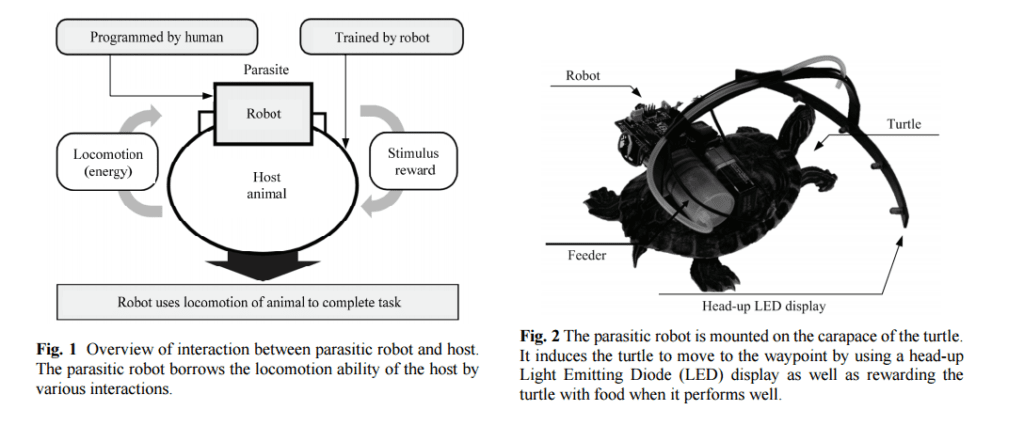
Robots are great at following instructions, crunching numbers or measuring stuff. But unless it’s a super expensive piece of work, robots are incredibly clunky and, well, stupid when it comes to locomotion. Sure, they might have the most precise GPS and gyroscopes built-in, but navigation is no substitute for good old-fashioned transportation. Animals, on the other hand, be them worms, dogs, or dinosaurs have really robust movement. With this in mind, South Korean researchers must have thought ‘well, why not combine the two’.
The team at Korea Advanced Institute of Science and Technology (KAIST) in Daejeon experimented with five red-eared slider turtles and a robot overlord that was strapped on the animals’ shells.
Each turtle was first taught to associate a red light with food. After the training was over, the robot attached to the turtle’s shell could effectively dictate the conditioned animal’s motion. To move left, right, forward or backward, the robot flashed its red LEDs. After it was satisfied, the robot only had to eject some food from an attached tube.
According to lead author Dae-Gun Kim, using this approach all of the five turtles successfully completed a five-checkpoint course around a tank filled with water, as reported in the Journal of Bionic Engineering. Kim says there’s a wide variety of animals from birds to fish that could perform equally as well as such tasks. Such robot-animal cooperations could be used for surveillance, exploration or anything that humans and robots find it difficult to do on their own.
“This hybrid animal-robot interaction system could provide an alternative solution to some of the limitations of conventional mobile robot systems in various fields, and could also act as a useful interaction system for the behavioral sciences,” the researchers wrote in their study.
Essentially, this is sort of the high-tech version of dog training but that doesn’t mean there aren’t any ethical issues involved. It’s not clear from its behavior if the Korean robot is a parasite or a symbiote. But at the end of the day, at least it’s not some mind-control terminator that turns its hosts into zombies. One American startup, for instance, is specialized in shipping so-called RoboRoach kits with instructions on how to convert your very own roach into a cyborg for educational purposes. The procedure involves trimming the roach’s antennae, perforating the thorax with wires and electrodes, and gluing a chip on its back. You can then maneuver the live roach as if it were a remote-controlled toy. A team from Texas A&M University is also experimenting with mind-controlled cockroaches.







